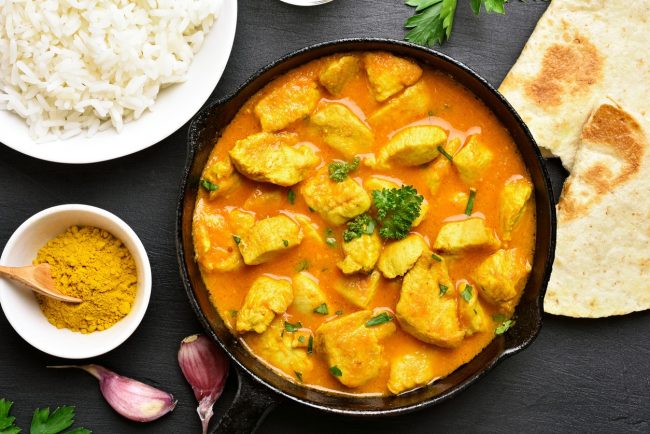Flavorful spices, exotic proteins and a vast array of veggies sound good, right? Then Indian food is right up your alley. Yes, even if you follow a paleo or low-carb diet.
The only downside is traditions often get lost in translation when manufacturers try to recreate authentic cuisine in large scale. That’s when you find canola oil instead of coconut oil, margarine in place of grass-fed ghee or corn-syrup-based mixes being served up rather than freshly prepared curry. This is not exactly the basis for healthy Indian food.
Because of these non-traditional methods, you may have gotten the impression that all Indian food is full of grains, legumes and heavy sauces. So you’ve avoided this vibrant cuisine in order to stay true to your paleo diet roots. Thankfully, that’s not the case.
With these tips in mind, you’ll be able to pick out paleo-friendly Indian food at any restaurant or dinner party.
5 tips for choosing healthy Indian food
1. Choose a simple protein. Tandoori is an excellent option when looking for healthy Indian food. Tandoori is prepared by roasting chicken or lamb that has been marinated in yogurt and spices. It’s rich in flavor and incredibly tender. If you’d prefer to steer clear of dairy, choose chicken curry, instead. The tomato-based stew is full of sweet and colorful spices, like turmeric, cinnamon and cardamom.
2. Double up on veggies. There are many Indian dishes that qualify as vegetarian or vegan, so it won’t be hard at all to fill your plate with two or more delectable veggies. Cauliflower, eggplant, peas and tomatoes are the most commonly found Indian vegetables. Try them in baingan bharta, a roasted eggplant dish with onions, tomatoes and traditional Indian spices. Another favorite is bhindi masala, a combination of okra and peppers with garam masala, coriander and cumin.
3. Ask questions. When you’re out at any restaurant, it’s important to ask questions to ensure you order exactly you want. Don’t be shy. With a growing awareness of specialty diets and food allergies, restaurants are more understanding than ever. Besides, servers at ethnic restaurants are used to getting questions about the menu. If you’re not familiar with the language, simply ask. Your server can explain what’s in the dish and how it’s prepared.
4. Get around the grains. Many traditional Indian meals include naan, samosas and basmati rice. But skipping these grain-based foods is easier than you think. Start with a simple salad, and then use that as the base for your protein instead of the rice or naan. You’ll feel full and satisfied without losing an ounce of that delicious Indian flavor.
5. Do dessert due diligence. Most Indian desserts are made with sugar and dairy, but that doesn’t mean you have to miss out completely. Opt for a more fat-centric treat, such as gajar halwa. It’s a sweet mix of grated carrots, cardamom, cinnamon, ghee and condensed milk. Sub the milk for coconut milk and top it off with pistachios. Or, try a simple fruit medley with a sprinkle of cardamom and roasted cashews for crunch. You’ll get just enough sweet while balancing the fat and reducing the glycemic load (no sugar spikes!).
Following the Paleo diet or the low-carb, high-fat ketogenic diet is not as restrictive as it seems. In fact, you can experience a world of flavors – some you may have never thought to try. Simply follow these hacks, and you’ll see that healthy Indian food is well within reach.

